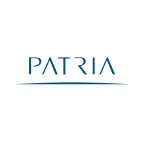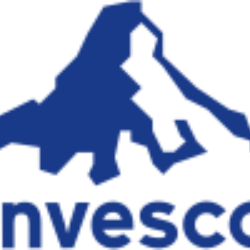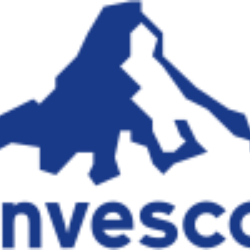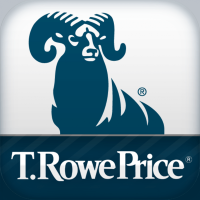SFNXF

Sofina Société Anonyme
SFNXF
(1.8)230,00 USD
3.77% ROA
4.65% ROE
17.96x PER
6.944.333.813,24 USD
7.38% DER
1.89% Yield
41.13% NPM
Sofina Société Anonyme Stock Analysis
Sofina Société Anonyme Fundamental Analysis
Fundamental analysis in stock investing is like studying the foundation of a house before buying it. It involves looking at a company's financial health, like its earnings, assets, and debts, to determine if it's a good investment based on its fundamental strength and potential for growth.
| # | Analysis | Rating |
|---|---|---|
| 1 |
PBV
The stock's low PBV ratio (0.66x) suggests it's undervalued, making it an attractive opportunity for investors. |
|
| 2 |
DER
The stock has a low debt to equity ratio (9%), which means it has a small amount of debt compared to the ownership it holds |
|
| 3 |
Dividend
The company's consistent dividend payouts over the past five years exemplify its strong commitment to providing shareholders with reliable returns, making it an attractive investment option. |
|
| 4 |
Graham Number
The company's Graham number suggests that its stock price is underestimated, implying that it may present a compelling investment opportunity. |
|
| 5 |
ROE
The stock's ROE indicates a negative return (-18.11%) on shareholders' equity, suggesting poor financial performance. |
|
| 6 |
ROA
The stock's ROA (-18.37%) indicates that it's not effectively utilizing its assets to generate profits, making it a less favorable option to invest and earn consistent returns. |
|
| 7 |
Revenue Growth
Company's revenue has stayed stagnant, showing no signs of improvement and making it a less favorable choice. |
|
| 8 |
Net Profit Growth
The net profit of this company has shown no signs of growth over the last five years, suggesting limited profitability and making it a less attractive investment opportunity. |
|
| 9 |
Assets Growth
Company's revenue has remained stagnant over the past three years, indicating a lack of growth and making it a less favorable option. |
|
| 10 |
Dividend Growth
The company's dividend growth has remained unchanged for three years, signaling a lack of positive momentum and making it a less favorable investment choice. |
|
| 11 |
Buffet Intrinsic Value
Warren Buffett's formula suggests that the company's stock is overpriced (165), presenting a possible disadvantage for investors as its market price surpasses its estimated intrinsic value. |
Sofina Société Anonyme Technical Analysis
Technical analysis in stock investing is like reading the patterns on a weather map to predict future weather conditions. It involves studying past stock price movements and trading volumes to make predictions about where a stock's price might go next, without necessarily looking at the company's financial health.
| # | Analysis | Recommendation |
|---|---|---|
| 1 | Awesome Oscillator | Hold |
| 2 | MACD | Buy |
| 3 | RSI | Sell |
| 4 | Stoch RSI | Buy |
Sofina Société Anonyme Price Chart
Financial Statements
Financial statements are like report cards for companies. They show how much money a company makes (income statement), what it owns and owes (balance sheet), and where it spends its money (cash flow statement), helping stock investors understand if a company is healthy and worth investing in.
Income Statements
An income statement for a company is like a scoreboard for its profits and losses. It shows how much money the company made (revenue) and how much it spent to make that money (expenses), helping stock investors see if a company is making a profit or not.
Revenue in stock investing is the total amount of money a company earns from its sales, and it's a key factor that investors consider to assess a company's financial performance and growth potential.
| Year | Revenue | Growth |
|---|---|---|
| 2005 | 174.901.000 | |
| 2006 | 242.662.000 | 27.92% |
| 2007 | 303.320.000 | 20% |
| 2008 | 103.321.000 | -193.57% |
| 2009 | 218.512.000 | 52.72% |
| 2010 | 148.956.000 | -46.7% |
| 2011 | 160.959.000 | 7.46% |
| 2012 | 174.592.000 | 7.81% |
| 2013 | 222.729.000 | 21.61% |
| 2014 | 308.987.000 | 27.92% |
| 2015 | 336.961.000 | 8.3% |
| 2016 | 297.324.000 | -13.33% |
| 2017 | 513.263.000 | 42.07% |
| 2018 | 898.748.000 | 42.89% |
| 2019 | 1.238.317.000 | 27.42% |
| 2020 | 1.421.940.000 | 12.91% |
| 2021 | 2.651.510.000 | 46.37% |
| 2022 | -1.827.816.000 | 245.06% |
| 2023 | -63.649.000 | -2771.71% |
| 2024 | 3.255.784.000 | 101.95% |
Research and Development Expenses are the costs a company incurs to create and improve its products or services, which can be important for investors to evaluate a company's innovation and potential for future growth.
| Year | Research and Development Expenses | Growth |
|---|---|---|
| 2005 | 0 | |
| 2006 | 0 | 0% |
| 2007 | 0 | 0% |
| 2008 | 0 | 0% |
| 2009 | 0 | 0% |
| 2010 | 0 | 0% |
| 2011 | 0 | 0% |
| 2012 | 0 | 0% |
| 2013 | 0 | 0% |
| 2014 | 0 | 0% |
| 2015 | 0 | 0% |
| 2016 | 0 | 0% |
| 2017 | 0 | 0% |
| 2018 | 0 | 0% |
| 2019 | 6 | 100% |
| 2020 | 16 | 62.5% |
| 2021 | 26 | 36% |
| 2022 | -28 | 189.29% |
| 2023 | 0 | 0% |
| 2024 | 0 | 0% |
General and Administrative Expenses are the costs a company incurs to run its day-to-day operations, such as office rent, salaries, and utilities, which investors consider to understand a company's overall efficiency and management effectiveness.
| Year | General and Administrative Expenses | Growth |
|---|---|---|
| 2005 | 0 | |
| 2006 | 0 | 0% |
| 2007 | 0 | 0% |
| 2008 | 0 | 0% |
| 2009 | 0 | 0% |
| 2010 | 10.981.000 | 100% |
| 2011 | 10.054.000 | -9.22% |
| 2012 | 11.292.000 | 10.96% |
| 2013 | 11.919.000 | 5.26% |
| 2014 | 11.959.000 | 0.33% |
| 2015 | 14.394.000 | 16.92% |
| 2016 | 14.478.000 | 0.58% |
| 2017 | 13.397.000 | -8.07% |
| 2018 | 15.002.000 | 10.7% |
| 2019 | 13.703.000 | -9.48% |
| 2020 | 12.440.000 | -10.15% |
| 2021 | 21.334.000 | 41.69% |
| 2022 | 21.373.000 | 0.18% |
| 2023 | 17.068.000 | -25.22% |
| 2024 | 0 | 0% |
EBITDA stands for Earnings Before Interest, Taxes, Depreciation, and Amortization. It is a measure that helps stock investors analyze a company's profitability by looking at its earnings without considering certain expenses. This helps to get a clearer picture of the company's financial performance and its ability to generate cash flow.
| Year | EBITDA | Growth |
|---|---|---|
| 2005 | 159.508.000 | |
| 2006 | 233.739.000 | 31.76% |
| 2007 | 262.684.000 | 11.02% |
| 2008 | 82.245.000 | -219.39% |
| 2009 | 183.160.000 | 55.1% |
| 2010 | 130.677.000 | -40.16% |
| 2011 | 0 | 0% |
| 2012 | 142.937.000 | 100% |
| 2013 | 183.617.000 | 22.15% |
| 2014 | 298.143.000 | 38.41% |
| 2015 | 316.695.000 | 5.86% |
| 2016 | 255.581.000 | -23.91% |
| 2017 | 89.511.000 | -185.53% |
| 2018 | 865.246.000 | 89.65% |
| 2019 | 4.039.000 | -21322.28% |
| 2020 | -1.442.000 | 380.1% |
| 2021 | 795.000 | 281.38% |
| 2022 | -1.475.000 | 153.9% |
| 2023 | -2.217.000 | 33.47% |
| 2024 | 2.219.828.000 | 100.1% |
Gross profit is the money a company makes from selling its products or services after subtracting the cost of producing or providing them, and it is an important measure for investors to understand a company's profitability.
| Year | Gross Profit | Growth |
|---|---|---|
| 2005 | 174.901.000 | |
| 2006 | 242.662.000 | 27.92% |
| 2007 | 303.320.000 | 20% |
| 2008 | 103.321.000 | -193.57% |
| 2009 | 218.512.000 | 52.72% |
| 2010 | 148.956.000 | -46.7% |
| 2011 | 160.959.000 | 7.46% |
| 2012 | 174.592.000 | 7.81% |
| 2013 | 213.406.000 | 18.19% |
| 2014 | 299.483.000 | 28.74% |
| 2015 | 325.476.000 | 7.99% |
| 2016 | 286.623.000 | -13.56% |
| 2017 | 503.359.000 | 43.06% |
| 2018 | 887.033.000 | 43.25% |
| 2019 | 1.227.697.000 | 27.75% |
| 2020 | 1.409.500.000 | 12.9% |
| 2021 | 2.636.885.000 | 46.55% |
| 2022 | -1.827.990.000 | 244.25% |
| 2023 | -75.301.000 | -2327.58% |
| 2024 | 3.247.924.000 | 102.32% |
Net income in stock investing is like the money a company actually gets to keep as profit after paying all its bills, and it's an important measure to understand how well a company is doing financially.
| Year | Net Profit | Growth |
|---|---|---|
| 2005 | 161.173.000 | |
| 2006 | 229.002.000 | 29.62% |
| 2007 | 262.535.000 | 12.77% |
| 2008 | 84.960.000 | -209.01% |
| 2009 | 173.941.000 | 51.16% |
| 2010 | 141.471.000 | -22.95% |
| 2011 | 140.110.000 | -0.97% |
| 2012 | 152.110.000 | 7.89% |
| 2013 | 198.402.000 | 23.33% |
| 2014 | 286.934.000 | 30.85% |
| 2015 | 307.201.000 | 6.6% |
| 2016 | 267.518.000 | -14.83% |
| 2017 | 499.126.000 | 46.4% |
| 2018 | 861.135.000 | 42.04% |
| 2019 | 1.199.873.000 | 28.23% |
| 2020 | 1.379.061.000 | 12.99% |
| 2021 | 2.593.431.000 | 46.82% |
| 2022 | -1.871.526.000 | 238.57% |
| 2023 | -104.267.000 | -1694.94% |
| 2024 | 2.203.700.000 | 104.73% |
EPS, or earnings per share, is a measure that shows how much profit a company has earned for each outstanding share of its stock, and it is important for stock investors as it helps understand the profitability of a company and compare it with other companies in the market.
| Year | Earning per Share (EPS) | Growth |
|---|---|---|
| 2005 | 4 | |
| 2006 | 6 | 33.33% |
| 2007 | 7 | 14.29% |
| 2008 | 2 | -250% |
| 2009 | 5 | 60% |
| 2010 | 4 | -25% |
| 2011 | 4 | 0% |
| 2012 | 5 | 0% |
| 2013 | 6 | 20% |
| 2014 | 9 | 37.5% |
| 2015 | 9 | 11.11% |
| 2016 | 8 | -28.57% |
| 2017 | 15 | 50% |
| 2018 | 26 | 44% |
| 2019 | 36 | 28.57% |
| 2020 | 41 | 12.5% |
| 2021 | 77 | 47.37% |
| 2022 | -56 | 238.18% |
| 2023 | -3 | -1733.33% |
| 2024 | 66 | 104.55% |
Cashflow Statements
Cashflow statements show the movement of money in and out of a company, helping stock investors understand how much money a company makes and spends. By examining cashflow statements, investors can assess if a company is generating enough cash to pay its bills, invest in growth, and provide returns to stockholders.
Free cash flow is the leftover cash that a company generates after covering its operating expenses and capital expenditures, which is important for stock investors as it shows how much money a company has available to invest in growth, pay dividends, or reduce debt.
| Year | Free Cashflow | Growth |
|---|---|---|
| 2005 | -9.040.000 | |
| 2006 | -30.777.000 | 70.63% |
| 2007 | 300.292.000 | 110.25% |
| 2008 | 97.135.000 | -209.15% |
| 2009 | 178.903.000 | 45.71% |
| 2010 | -53.000 | 337652.83% |
| 2011 | -131.000 | 59.54% |
| 2012 | 64.320.000 | 100.2% |
| 2013 | 75.126.000 | 14.38% |
| 2014 | 45.115.000 | -66.52% |
| 2015 | 17.252.000 | -161.51% |
| 2016 | -15.078.000 | 214.42% |
| 2017 | 52.011.000 | 128.99% |
| 2018 | -33.394.000 | 255.75% |
| 2019 | 59.752.000 | 155.89% |
| 2020 | -65.717.000 | 190.92% |
| 2021 | -551.829.000 | 88.09% |
| 2022 | 294.032.000 | 287.68% |
| 2023 | 303.849.000 | 3.23% |
| 2024 | 100.637.000 | -201.93% |
Operating cash flow represents the cash generated or consumed by a company's day-to-day operations, excluding external investing or financing activities, and is crucial for stock investors as it shows how much cash a company is generating from its core business operations.
| Year | Operating Cashflow | Growth |
|---|---|---|
| 2005 | 0 | |
| 2006 | -29.103.000 | 100% |
| 2007 | 300.480.000 | 109.69% |
| 2008 | 97.274.000 | -208.9% |
| 2009 | 183.822.000 | 47.08% |
| 2010 | 0 | 0% |
| 2011 | 0 | 0% |
| 2012 | 62.126.000 | 100% |
| 2013 | 75.321.000 | 17.52% |
| 2014 | 45.223.000 | -66.55% |
| 2015 | 17.519.000 | -158.14% |
| 2016 | -14.381.000 | 221.82% |
| 2017 | 52.161.000 | 127.57% |
| 2018 | -33.319.000 | 256.55% |
| 2019 | 60.723.000 | 154.87% |
| 2020 | -65.297.000 | 193% |
| 2021 | -551.340.000 | 88.16% |
| 2022 | 294.161.000 | 287.43% |
| 2023 | 304.289.000 | 3.33% |
| 2024 | 100.759.000 | -202% |
Capex, short for capital expenditures, refers to the money a company spends on acquiring or upgrading tangible assets like buildings, equipment, or technology, which is important for stock investors as it indicates how much a company is investing in its infrastructure to support future growth and profitability.
| Year | Capital Expenditure | Growth |
|---|---|---|
| 2005 | 9.040.000 | |
| 2006 | 1.674.000 | -440.02% |
| 2007 | 188.000 | -790.43% |
| 2008 | 139.000 | -35.25% |
| 2009 | 4.919.000 | 97.17% |
| 2010 | 53.000 | -9181.13% |
| 2011 | 131.000 | 59.54% |
| 2012 | -2.194.000 | 105.97% |
| 2013 | 195.000 | 1225.13% |
| 2014 | 108.000 | -80.56% |
| 2015 | 267.000 | 59.55% |
| 2016 | 697.000 | 61.69% |
| 2017 | 150.000 | -364.67% |
| 2018 | 75.000 | -100% |
| 2019 | 971.000 | 92.28% |
| 2020 | 420.000 | -131.19% |
| 2021 | 489.000 | 14.11% |
| 2022 | 129.000 | -279.07% |
| 2023 | 440.000 | 70.68% |
| 2024 | 122.000 | -260.66% |
Balance Sheet
Balance sheets provide a snapshot of a company's financial health and its assets (such as cash, inventory, and property) and liabilities (like debts and obligations) at a specific point in time. For stock investors, balance sheets help assess the company's overall worth and evaluate its ability to meet financial obligations and support future growth.
Equity refers to the ownership interest or stake that shareholders have in a company, representing their claim on its assets and earnings after all debts and liabilities are paid.
| Year | Equity | Growth |
|---|---|---|
| 2005 | 3.453.492.000 | |
| 2006 | 4.149.731.000 | 16.78% |
| 2007 | 4.382.918.000 | 5.32% |
| 2008 | 3.243.681.000 | -35.12% |
| 2009 | 3.427.852.000 | 5.37% |
| 2010 | 3.706.976.000 | 7.53% |
| 2011 | 3.465.426.000 | -6.97% |
| 2012 | 3.684.199.000 | 5.94% |
| 2013 | 4.109.468.000 | 10.35% |
| 2014 | 4.650.576.000 | 11.64% |
| 2015 | 5.208.040.000 | 10.7% |
| 2016 | 5.268.010.000 | 1.14% |
| 2017 | 5.679.529.000 | 7.25% |
| 2018 | 6.543.593.000 | 13.2% |
| 2019 | 7.628.699.000 | 14.22% |
| 2020 | 8.900.411.000 | 14.29% |
| 2021 | 11.354.341.000 | 21.61% |
| 2022 | 9.313.329.000 | -21.91% |
| 2023 | 9.083.431.000 | -2.53% |
| 2024 | 9.509.303.000 | 4.48% |
Assets represent the valuable resources that a company owns, such as cash, inventory, property, and equipment, and understanding a company's assets helps investors assess its value and potential for generating future profits.
| Year | Assets | Growth |
|---|---|---|
| 2005 | 3.474.665.000 | |
| 2006 | 4.317.160.000 | 19.52% |
| 2007 | 4.747.407.000 | 9.06% |
| 2008 | 3.493.890.000 | -35.88% |
| 2009 | 3.529.788.000 | 1.02% |
| 2010 | 3.806.315.000 | 7.26% |
| 2011 | 3.591.637.000 | -5.98% |
| 2012 | 3.880.749.000 | 7.45% |
| 2013 | 4.303.564.000 | 9.82% |
| 2014 | 4.883.998.000 | 11.88% |
| 2015 | 5.457.169.000 | 10.5% |
| 2016 | 5.394.660.000 | -1.16% |
| 2017 | 5.697.081.000 | 5.31% |
| 2018 | 6.649.435.000 | 14.32% |
| 2019 | 7.680.468.000 | 13.42% |
| 2020 | 9.093.055.000 | 15.53% |
| 2021 | 12.085.047.000 | 24.76% |
| 2022 | 10.197.835.000 | -18.51% |
| 2023 | 9.842.933.000 | -3.61% |
| 2024 | 10.264.489.000 | 4.11% |
Liabilities refer to the financial obligations or debts that a company owes to creditors or external parties, and understanding a company's liabilities is important for investors as it helps assess the company's financial risk and ability to meet its obligations.
| Year | Liabilities | Growth |
|---|---|---|
| 2005 | 21.173.000 | |
| 2006 | 167.429.000 | 87.35% |
| 2007 | 3.440.000 | -4767.12% |
| 2008 | 3.328.000 | -3.37% |
| 2009 | 3.216.000 | -3.48% |
| 2010 | 99.339.000 | 96.76% |
| 2011 | 126.211.000 | 21.29% |
| 2012 | 196.550.000 | 35.79% |
| 2013 | 194.096.000 | -1.26% |
| 2014 | 233.422.000 | 16.85% |
| 2015 | 249.129.000 | 6.3% |
| 2016 | 126.650.000 | -96.71% |
| 2017 | 17.552.000 | -621.57% |
| 2018 | 105.842.000 | 83.42% |
| 2019 | 51.769.000 | -104.45% |
| 2020 | 192.644.000 | 73.13% |
| 2021 | 730.706.000 | 73.64% |
| 2022 | 884.506.000 | 17.39% |
| 2023 | 759.502.000 | -16.46% |
| 2024 | 755.186.000 | -0.57% |
Sofina Société Anonyme Financial Ratio (TTM)
Valuation Metrics
- Revenue per Share
- 38.25
- Net Income per Share
- 11.67
- Price to Earning Ratio
- 17.96x
- Price To Sales Ratio
- 5.47x
- POCF Ratio
- 12.73
- PFCF Ratio
- 12.72
- Price to Book Ratio
- 0.73
- EV to Sales
- 5.92
- EV Over EBITDA
- 13.75
- EV to Operating CashFlow
- 13.74
- EV to FreeCashFlow
- 13.76
- Earnings Yield
- 0.06
- FreeCashFlow Yield
- 0.08
- Market Cap
- 6,94 Bil.
- Enterprise Value
- 7,51 Bil.
- Graham Number
- 274.27
- Graham NetNet
- -1.25
Income Statement Metrics
- Net Income per Share
- 11.67
- Income Quality
- 1.41
- ROE
- 0.04
- Return On Assets
- 0.04
- Return On Capital Employed
- 0.04
- Net Income per EBT
- 1
- EBT Per Ebit
- 0.97
- Ebit per Revenue
- 0.42
- Effective Tax Rate
- 0
Margins
- Sales, General, & Administrative to Revenue
- 0
- Research & Developement to Revenue
- 0
- Stock Based Compensation to Revenue
- 0.01
- Gross Profit Margin
- 1
- Operating Profit Margin
- 0.42
- Pretax Profit Margin
- 0.41
- Net Profit Margin
- 0.41
Dividends
- Dividend Yield
- 0.02
- Dividend Yield %
- 1.89
- Payout Ratio
- 0.57
- Dividend Per Share
- 3.95
Operating Metrics
- Operating Cashflow per Share
- 16.47
- Free CashFlow per Share
- 16.45
- Capex to Operating CashFlow
- 0
- Capex to Revenue
- 0
- Capex to Depreciation
- 0
- Return on Invested Capital
- 0.04
- Return on Tangible Assets
- 0.04
- Days Sales Outstanding
- 44.05
- Days Payables Outstanding
- 0
- Days of Inventory on Hand
- 0
- Receivables Turnover
- 8.29
- Payables Turnover
- 0
- Inventory Turnover
- 0
- Capex per Share
- 0.02
Balance Sheet
- Cash per Share
- 18,04
- Book Value per Share
- 286,44
- Tangible Book Value per Share
- 286.44
- Shareholders Equity per Share
- 286.44
- Interest Debt per Share
- 21.41
- Debt to Equity
- 0.07
- Debt to Assets
- 0.07
- Net Debt to EBITDA
- 1.04
- Current Ratio
- 0
- Tangible Asset Value
- 9,51 Bil.
- Net Current Asset Value
- -0,76 Bil.
- Invested Capital
- 3343000
- Working Capital
- -0,01 Bil.
- Intangibles to Total Assets
- 0
- Average Receivables
- 0,36 Bil.
- Average Payables
- 0,00 Bil.
- Average Inventory
- 642814500
- Debt to Market Cap
- 0.1
Dividends
Dividends in stock investing are like rewards that companies give to their shareholders. They are a portion of the company's profits distributed to investors, typically in the form of cash payments, as a way for them to share in the company's success.
| Year | Dividends | Growth |
|---|---|---|
| 2014 | 4 | |
| 2015 | 3 | -100% |
| 2016 | 3 | 33.33% |
| 2017 | 3 | 0% |
| 2018 | 4 | 0% |
| 2019 | 3 | 0% |
| 2020 | 3 | 0% |
| 2021 | 4 | 25% |
| 2022 | 3 | -33.33% |
| 2023 | 4 | 0% |
| 2024 | 4 | 0% |
Sofina Société Anonyme Profile
About Sofina Société Anonyme
Sofina Société Anonyme is a private equity and venture capital firm specializing in direct and fund of funds investments. Within direct investments, it specializes in growth capital, early, startup, later stages, mature, emerging growth, mid venture, late venture, industry consolidation, and LBO investments. The firm primarily invests in portfolio of companies that engages in digital transformation, consumer & retail, education, healthcare, energy and services, e-commerce, consumer goods, digital, satellite operations, industry, finance companies, and financial services worldwide. It also invests in the media, communications, insurance, property development sectors. The firm typically invests in European based companies with a global exposure, and it also has a particular focus on companies based in Western Europe and Asia such as in India, China and South East Asia and also in the United States. It invests between €75 million ($84.81 million) and €300 million ($339.2 million) in companies with an enterprise value between €250 million ($282.7 million) and €4500 million ($5088.41 million) in minority investments, and €15 million ($16.96 million) and €50 million ($56.54 million) in companies operating in emerging markets or fast growing sectors. It invests in privately owned and listed companies. It invests in private companies to support growth, finance acquisitions, give liquidity to existing shareholders/families, support sales processes, and make minority investment alongside shareholders controlling shareholders and in listed companies for replacement of existing shareholder, long term support of controlling shareholders, and delisting. Within fund of funds, the firm focuses on private equity, venture capital and growth equity funds, and selected relationships in buyout and special situations. It also manages funds in the fields of private equity and hedge funds. It typically invests in the US, Europe and Asia, and also concentrates on emerging markets. The firm makes between €10 million ($11.31 million) and €40 million ($45.23 million) commitments in funds. The firm prefers to hold a minority ownership equity in its portfolio companies and also seeks board seat. The firm also prefers majority stake and co-invests. It typically holds its investments for ten to twelve years. Sofina Société Anonyme was founded in 1980 and is based in Brussels, Belgium with additional offices in Luxembourg and Singapore.
- CEO
- Mr. Harold Y. H. Boel
- Employee
- 87
- Address
-
Rue de l’Industrie, 31
Brussels, 1040
Sofina Société Anonyme Executives & BODs
| # | Name | Age |
|---|---|---|
| 1 |
Mr. Maxence Tombeur Managing Director |
70 |
| 2 |
Mr. Harold Y. H. Boel Chief Executive Officer & Director |
70 |
| 3 |
Mr. Clément Gury Head of Finance |
70 |
| 4 |
Ms. Amélie Lagache Managing Director |
70 |
| 5 |
Mr. Victor Casier Managing Director of Brussels |
70 |
| 6 |
Mr. Xavier Coirbay Managing Director |
70 |
| 7 |
Mr. Edward Johan Koopman Managing Director |
70 |
| 8 |
Ms. Giulia van Waeyenberge Managing Director |
70 |
| 9 |
Mr. Jean-François Lambert Head of Transformation |
70 |
| 10 |
Mr. Wauthier de Bassompierre MD & General Secretary |
70 |
















